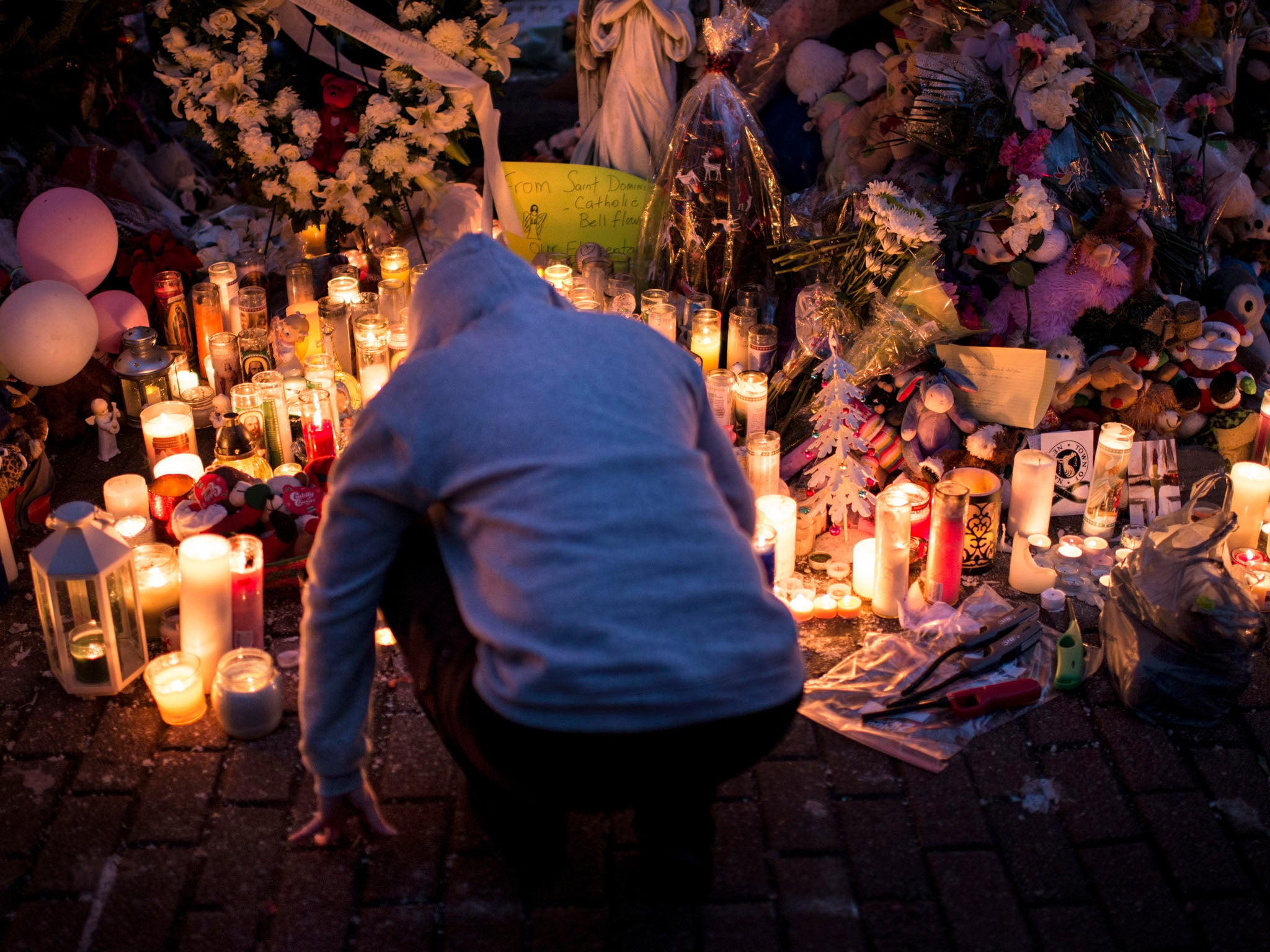Gun deaths in America projected to soon top car fatalities

Your support helps us to tell the story
From reproductive rights to climate change to Big Tech, The Independent is on the ground when the story is developing. Whether it's investigating the financials of Elon Musk's pro-Trump PAC or producing our latest documentary, 'The A Word', which shines a light on the American women fighting for reproductive rights, we know how important it is to parse out the facts from the messaging.
At such a critical moment in US history, we need reporters on the ground. Your donation allows us to keep sending journalists to speak to both sides of the story.
The Independent is trusted by Americans across the entire political spectrum. And unlike many other quality news outlets, we choose not to lock Americans out of our reporting and analysis with paywalls. We believe quality journalism should be available to everyone, paid for by those who can afford it.
Your support makes all the difference.Guns and cars have long been among the leading causes of non-medical deaths in the U.S. By 2015, firearm fatalities will probably exceed traffic fatalities for the first time, based on data compiled by Bloomberg.
While motor-vehicle deaths dropped 22 percent from 2005 to 2010, gun fatalities are rising again after a low point in 2000, according to the Atlanta-based Centers for Disease Control and Prevention. Shooting deaths in 2015 will probably rise to almost 33,000, and those related to autos will decline to about 32,000, based on the 10-year average trend.
As the nation reels from the massacre at Sandy Hook Elementary School, the shift shows the effects of public policy, said Garen Wintemute, director of the Violence Prevention Research Program at the University of California, Davis.
The fall in traffic deaths resulted from safer vehicles, restricted privileges for young drivers and seat-belt and other laws, he said. By contrast, "we've made policy decisions that have had the impact of making the widest array of firearms available to the widest array of people under the widest array of conditions." While fewer households have guns, people who own guns are buying more of them, he said.
Friday's slaying of 20 children and six adults at the school in Newtown, Conn., reignited a debate over gun violence. While mass murders are rare, shootings aren't. About 85 Americans are shot dead daily, 53 of them suicides. Every day, one of those killed by firearms is 14 or younger.
Of the total, the CDC data show, 16 are between the ages of 15 and 24, mostly homicide victims. Wintemute said more than 200 people go to U.S. emergency rooms every day with gunshot wounds.
Gun deaths by homicide, suicide or accident peaked at 37,666 in 1993 before declining to a low of 28,393 in 2000, the data show. Since then the total has risen to 31,328 in 2010, an increase of 2,935, or eight more victims a day.
At the same time, violent crime and murder rates have fallen in the U.S., said Daniel Webster, director of the Johns Hopkins University Center for Gun Policy and Research in Baltimore. Homicides may be up this year, though the murder rate from 2006 to 2011 fell 19 percent, to 4.7 for every 100,000 people, Webster said in an e-mail.
While recent gun sales haven't led to an increase in crime, research indicates that over time, higher levels of gun ownership are associated with increased rates of homicide and suicide, Webster said. The Sandy Hook killings are a "potential game changer" for gun-control laws and the response to it unlike any incident he's seen in 20 years of studying gun violence, he said.
"We haven't had a year like 2012 for mass shootings before, with each one being more disturbing than the last," Webster said. "It's harder to chalk this up to random acts than to flaws in our gun laws."
The drop in gun deaths since 1993 may be a result of less violence from drug trafficking, more people incarcerated and more police crackdowns on illegal firearms, according to both Webster and Wintemute.
The percentage of gun-owning households has fallen since 2004 to 32 percent in 2010, according to the General Social Survey by NORC at the University of Chicago. The survey indicates at least 1.8 firearms per household, or at least 70 million in households nationwide, said Tom Smith, the survey's principal investigator.
It's impossible to verify how many guns are owned legally or illegally, Webster said. A survey eight years ago pegged the number of firearms around 300 million, he said.
Traffic fatalities in 2011 were the lowest since 1949, according to the National Highway Traffic Safety Administration. Although drivers in the U.S. logged fewer miles than in 2010, the fatality rate was the lowest on record, 1.1 deaths for each 100 million vehicle miles driven.
There were 53,524 motor-vehicle deaths in 1979, compared with a projected 33,975 this year, according to the data compiled by Bloomberg.
"In the past several decades, we've seen remarkable improvements in both the way motorists behave on our roadways and in the safety of the vehicles they drive," according to a Dec. 10 statement by the agency.
Join our commenting forum
Join thought-provoking conversations, follow other Independent readers and see their replies
Comments